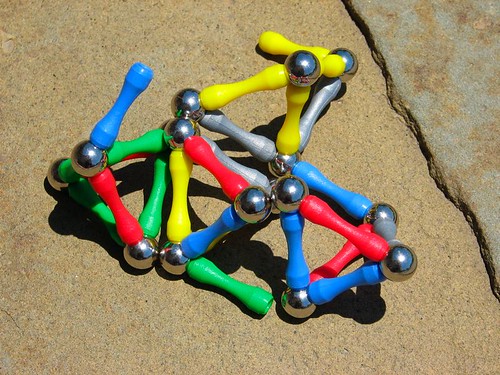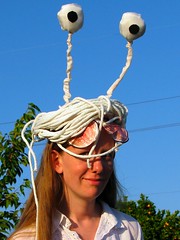
Graduate school can do funny things to your head. Sometimes the urge to procrastinate becomes so overwhelming that you strike out in a great burst of creativity; determined to do something, anything, to avoid that which you’re supposed to be doing. Like the time that I painted my bicycle purple (with green polka dots) to avoid studying for my qualifying exam– but I seem to digress.
Where was I? Oh, yes: hard drive wind chimes. I used to disassemble hard drives, whenever possible, both to extract the magnets and to see how the different types worked. Different hard drives contain all kinds of wonderful components: voice coil motors, stepper motors, exotic bearings, electropolished machined parts, chemically etched metal webs, flexible circuitry, and my personal favorite: optical quadrature encoders for pivot arm position readout. The drive platters themselves are also quite remarkable: precisely made aluminum patters with a surface not unlike recording tape. The disks make a lovely clear note if you strike them, so it was only natural to make them into a set of wind chimes.
Continue reading How to make hard drive wind chimes →












